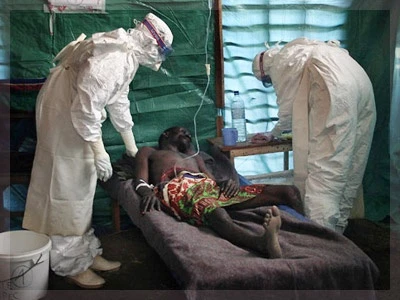1.An outbreak of Marburg hemorrhagic fever has been recorded in Africa. Cases of infection with the Marburg virus, which causes a deadly hemorrhagic fever, have been confirmed in Rwanda.
More than 27 cases have already been reported in seven districts of the country, including nine deaths. More than 70 percent of the confirmed cases are health workers from two clinics in the capital Kigali, who are now being treated in hospital.
Several people outside Rwanda are suspected of being infected, two of them are being tested in Hamburg. The number of cases makes the Marburg virus outbreak the fourth largest in history.
WHO has assessed the risk of this outbreak as very high at the national level, high at the regional level and low at the global level. This means that the likelihood of a pandemic is very low, although the disease could spread to neighboring African countries, as it did during the Ebola outbreak in 2016.
3Marburg virus is related to EbolaMarburg virus belongs to the filovirus family (Filoviridae), which also includes the Ebola virus. This family of viruses causes one of the most severe and deadly infections - viral hemorrhagic fevers. Filoviruses are RNA viruses, meaning their genetic material is in the form of single-stranded RNA rather than DNA, like many other viruses. RNA viruses tend to mutate more quickly, making it difficult to create vaccines and other treatments. The virus has an elongated filamentous shape, which is also characteristic of all filoviruses, including the Ebola virus. This thread has a helical structure and is surrounded by a lipid shell. The size of the virus particle can vary, which makes the virus flexible and allows it to effectively penetrate human cells. The ability of the virus to replicate—multiply inside host cells—is very high, which explains the rapid spread of infection in the body and the severe course of the disease.
4The source of the virus is African flying foxes. The main natural reservoir of the virus is fruit bats, especially the species Rousettus aegyptiacus (flying foxes), which live in Central and Eastern Africa. Flying foxes can carry the virus asymptomatically, excreting it in urine, saliva and feces. People can become infected with the virus through contact with the secretions of these animals, for example by visiting the caves where they live. In addition to flying foxes, the virus can also be transmitted to humans from other animals, including infected monkeys and other mammals that come into contact through hunting or consumption. food of meat of wild animals (for example, in the form of an exotic dish bushmit). Transmission from person to person through contact with body fluids (blood, saliva, vomit, urine) or through contaminated objects such as medical instruments or clothing is also possible. The main mechanism of transmission is direct contact with liquids, and airborne transmission is possible only through close interaction.
6 There is no specific treatment for fever. At the moment, there is no specific treatment for the Marburg virus, and at best, recovery occurs on its own. Treatment is symptomatic and aimed at maintaining the vital functions of the body. The main way is to support the body so that it can withstand the hemorrhagic phase. This involves maintaining fluid levels in the body through fluids or intravenous fluids, plasma and blood transfusions, and a course of antibiotics to prevent secondary infections due to weakened immunity. More specific treatments are currently being tested in clinical trials, including vaccines and monoclonal antibodies designed to combat Marburg virus, but none have yet been fully approved for widespread use. In some cases, antiviral drugs (such as remdesivir) are used, but their effectiveness against Marburg virus has not been fully proven.7 Marburg virus can cause an epidemic, but not a pandemic. Although hemorrhagic fevers such as Ebola and Marburg viruses have a high mortality rate and can cause severe outbreaks, they are much less likely to become a pandemic compared to respiratory viruses such as influenza or COVID-19. The virus can spread quickly in conditions of insufficient healthcare systems, so it poses less of a threat to countries with developed medicine. Viruses also require close contact to transmit and develop symptoms quickly, allowing infected individuals to be isolated more quickly and measures to prevent spread taken. Some fear that viruses can mutate, but to be transmitted through airborne droplets, the virus would have to significantly change its mechanisms of reproduction and spread, which requires significant and specific mutations.


























